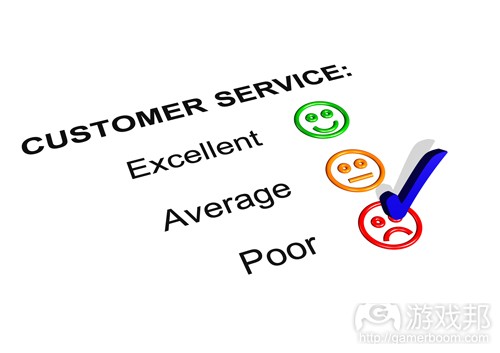移动设备迫使商家重视客服质量与消费者反馈
作者:Abinash Tripathy
手机设备给人们提供了全新的交易方式。对商家而言,好消息是数百万美国人现在可以下载你的应用,并通过智能手机和平板购买东西。
坏消息是,如果你的客户服务不到位或不灵活,不能应对这种快速变化的消费方式,那么手机用户就会给你的应用写差评,发表在社交媒体上或彻底抛弃你的应用。
如果你的手机应用没有内置直接沟通渠道,而只能通过邮件或网站提交问题和意见,那么你就危险了。应用内置客户服务可以让你更快更有效地对消费者意见作出回应,获得消费者反馈,以及延长每个客户的终身价值。
大咨询公司已经应客户服务的要求,推出自己的内置应用,如Salesforce有它的Desk.com,Zendesk有它的Zendesk for Mobile——我们将看到更多、更强大的手机本地客户服务技术出现。例如,Helpshift公司的本地咨询服务,可以自动生成诊断信息来帮助解决设备的问题。它还可以自动生成询问客户的信息,如他们的消费历史和其他帐户信息,这样客户就不必提供这些信息了。这些客户数据不仅帮助你更高效地解答疑问,而且你可以制作更加详细全面的档案,使以后的咨询工作更加简单有效。
因为本地手机客户服务甚至允许你与手机消费者在应用中即时交流,这就缩短了你的反应时间,节省了写邮件和/或电话等待时间。
事实上,本地客户服务可以彻底解决支持问题。手机用户在遇到应用的新版本的问题时,他们可以在应用内置的帮助栏内找到他们的问题的答案,他们还可以搜索用他们的语言的知识库,这样你就可以防止他们提交支持问题了。
很容易理解为什么手机用户喜欢立即的、有意义的客户服务:因为可以更快更方便更容易地解决他们的问题,而不是等待带来更多问题的邮件的回复,或者更糟,彻底删除应用并在应用商店留下差评。最重要的是,我们需要快乐的消费者。当消费者快乐时,商业才能活跃。完善手机客户服务显然有利于商业。
最近被Yahoo收购的、从事手机应用制作的公司Astrid,曾经缩减用于管理支持问题一半以上的时间。
如Talk to Myself和Spokn等手机应用开发商曾经告诉我们,他们能够在用户的问题变成抱怨以前解决它们,所以他们才能这么高效地服务成千上万的手机用户。
任何与用户数量不断增多的手机应用有关的公司,都必须考虑如何为手机用户提供服务和支持,以及如何保证服务质量不因用户增多而下降。内置客户服务不仅不受规模影响,而且更节省成本:
1、减少支持成本和日常费用——通过消除多余的问题和关闭邮件交流循环,应用开发者可以大大减少客户抱怨和回应的时间。这使得公司每次回复可以解决更多客户问题,且随着商业规模扩大,回复也不会增多。
2、减少客户流失和增加客户终身价值——在应用中找到快乐和沉浸感的用户不会离开。事实上,他们消费得更多。良好的用户体验会增加用户沉浸感和留存率。
3、增加品牌号召力和销量——世界上最热门的品牌之所以成功,是因为他们有的不只是用户,还有忠实的粉丝和品牌传道者。愉快的用户体验可以增强品牌号召力和口口相传的营销效果。
在不久的将来,我们可以期望大公司利用这种新的应用内置交流渠道来为更多手机用户提供服务和支持。想象一下,能够与Comcast、活尔玛、Target、亚马逊和星巴克的服务支持代表直接交流,那会是怎么样的情景?想象一下,立即向公司代表分享错误信息的截图或混乱的零售商店的照片并收到立即回复,又是怎样的情景?对于先知先觉的公司,这种以客户为中心的未来并不遥远。(本文为游戏邦/gamerboom.com编译,拒绝任何不保留版权的转载,如需转载请联系:游戏邦)
How mobile devices are forcing businesses to rethink customer service
by Abinash Tripathy
Mobile devices have created an entirely new way for people to interact with businesses. The good news for businesses is that millions of Americans can now download your app and make purchases on their smartphones and tablets every day.
The bad news is, if your customers service isn’t robust and flexible enough to deal with this fast-growing channel, your mobile customers will write negative app reviews, vent on social media, or abandon your app (and your business) altogether.
If your business doesn’t yet have a direct channel of communication within your mobile application itself — and instead you’re diverting questions and complaints to your email or web-based customer service — you’re leaving yourself vulnerable. In-app customer service lets you respond to tickets faster and more effectively, get customer feedback, and boost the lifetime value of every customer.
The big help desk companies are already adapting to the requirements of in-app customer service — Salesforce with its Desk.com and Zendesk with its Zendesk for Mobile — and we’ll see native, mobile centric customer service technologies emerging to take these capabilities deeper. My company Helpshift’s native help desk, for example, can auto-generate diagnostic information to help with device-specific issues. And it can also auto-generate a lot of data about the customer in question — such as their purchase history and other account information — so the customer doesn’t need to provide it. That customer data doesn’t just help you answer tickets more effectively, you can also use it to create a more comprehensive profile over time so that each interaction gets easier and more meaningful.
And since native mobile customer service even lets you chat with mobile customers, in real-time, right in the app, cutting down on your response time and endless email chains and/or phone hold music.
In fact, native integrations can prevent support tickets altogether. By empowering loyal mobile users who, for example, are struggling with a new version of an app to navigate to an in-app help section where the answer to their question is front and center, along with a searchable knowledgebase in their language, you can pre-empt support tickets.
It’s easy to understand why mobile users love instant, meaningful customer support: It helps them solve their problems as quickly, easily, and painlessly as possible. Rather than waiting for a rep to respond to an email with yet more questions, or worse, deleting the app altogether and leaving a negative review in the app store, we’re back to using the apps we love. Most importantly, we’re happier users — and when customers are happy, businesses are happier, too. But bridging the mobile customer service divide has clear business benefits as well.
One company, popular mobile productivity app maker Astrid, which was recently acquired by Yahoo, has been able to cut the time spent on managing support tickets by more than half. [Disclosure: Astrid is a customer of my company.]
Other mobile applications, like Talk to Myself and Spokn, have told us they’re able to answer mobile users’ questions before they become tickets, so they can service tens of thousands of mobile users much more efficiently.
Any business with a mobile application and a growing user base needs to consider how they are providing service and support to mobile customers—and how they intend to provide the same level of excellence as the user base grows. In-app customer support makes scaling radically easier and more cost-efficient by helping you:
Reduce support costs and overhead – By eliminating redundant questioning and closing email exchange loops, app developers can dramatically reduce ticket volume as well as the time needed to respond to tickets. This enables companies to respond to more service tickets per rep and require fewer reps as the business grows.
Reduce customer churn and increase customer lifetime value – Happy, engaged customers don’t leave. In fact, they often spend more. A better user experience results in increased customer engagement and customer retention.
Increase brand advocacy and sales — The world’s most popular brands are successful because they have more than just customers; they have loyal fans and brand ambassadors. A delightful customer experience fosters brand advocacy and word-of-mouth marketing.
In the near future, we can expect larger companies to leverage this new in-app communication channel to provide service and support to even greater numbers of mobile customers. Imagine being able to communicate with a support representative from Comcast, Walmart, Target, Amazon, or Starbucks, in real time while you’re on the go? Imagine instantly sharing a screenshot of an error message — or a picture of a messy retail store — with a company representative and receiving an immediate reply. For forward-thinking businesses, this customer-centric future is not far off.(source:venturebeat)








































 闽公网安备35020302001549号
闽公网安备35020302001549号